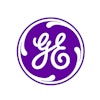Wednesday, December 4 | 3:00 p.m.-3:10 p.m. | SSM07-01 | Room N228
Although it was much faster, an artificial intelligence (AI) algorithm couldn't beat the performance of first-year radiology residents for detecting pneumothorax in a study to be discussed in this talk.At Johns Hopkins University in Baltimore, first-year radiology residents take radiography call beginning in the summer of their first year. That can be a daunting task, according to presenter Dr. Paul Yi.
"We were curious if an AI system could help such new radiology residents in their on-call shifts to help them more quickly and accurately identify potential emergencies like pneumothorax on chest radiographs," Yi told AuntMinnie.com.
The researchers used over 110,000 chest radiographs to train a deep-learning algorithm to identify pneumothorax. They then compared the model's performance with that of two first-year radiology residents on a test set of approximately 600 chest x-rays.
The two residents achieved an area under the curve of 0.942 and 0.905 for detecting pneumothorax, compared with 0.841 for the algorithm. However, the algorithm also read images more than 1,000 times faster.
"So while the algorithm may not be superior to the residents' accuracy, it could help triage images likely to contain pneumothorax and flag them for expedited review by residents, which could help their workflow and turnaround times to ultimately get the patients the care that they need in the shortest time possible," Yi noted.
Get all the details by viewing this presentation, which was also awarded the RSNA's trainee research prize for a resident.




















